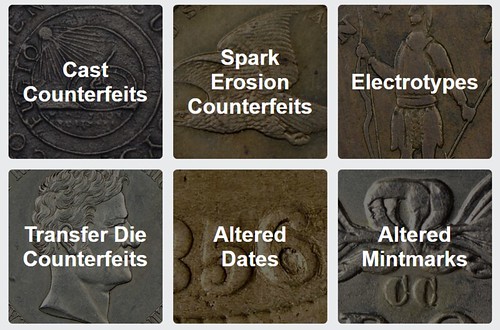
PREV ARTICLE
NEXT ARTICLE
FULL ISSUE
PREV FULL ISSUE
NGC OPENS COUNTERFEIT DETECTION PORTALNGC has created a great online source for information about counterfeit coins. -Editor
 Numismatic Guaranty Corporation® (NGC®) has launched an online Counterfeit Detection resource, leveraging its decades of authentication expertise. Hosted at NGCcoin.com/counterfeits, the resource features the 50 US coins and 25 Chinese coins most commonly targeted by counterfeiters. Each of these coins has on its own page, with high-resolution images, the type of counterfeits of it typically seen, tips for detecting these counterfeits and other helpful information. This valuable resource was assembled under the direction of Rick Montgomery, NGC President, Finalizer and one of the world’s foremost coin authenticators. Many members of the NGC grading team also provided research and insights. NGC's graders have identified more than 100,000 counterfeit and altered coins since 1987. The resource puts a spotlight on such coins as the 1909-S VDB Lincoln Cent, the most commonly counterfeited US coin, according to submissions to NGC. The Year 23 (1934) Junk L&M-110 Dollar, named for the ship on its reverse, is the most commonly seen counterfeit of a Chinese coin, according to submissions to NGC. Other highlights of the resource’s lists of counterfeit coins:
The Counterfeit Detection portal also includes a section that explains what distinguishes the different types of fakes, which include cast, spark erosion, electrotype and transfer die counterfeits, as well as altered dates and altered mintmarks. To visit the NGC Counterfeit Detection site, see: To read the complete article, see: Wayne Homren, Editor The Numismatic Bibliomania Society is a non-profit organization promoting numismatic literature. See our web site at coinbooks.org. To submit items for publication in The E-Sylum, write to the Editor at this address: whomren@gmail.com To subscribe go to: https://my.binhost.com/lists/listinfo/esylum All Rights Reserved. NBS Home Page Contact the NBS webmaster 
|